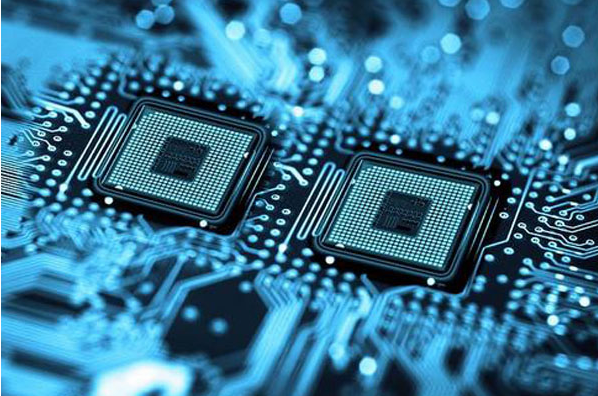What are return currents?It is a phenomenon in which the contact area of a solder joint on a printed circuit board (PCB) changes during heating and cooling, a process that involves path planning before soldering electronic components.
The PCB return path is the path that current takes from the load back to the power supply in a digital circuit. This design is critical to signal integrity and electromagnetic compatibility (EMC), as an illogical return path can lead to signal loss or electromagnetic interference.
The basic principle of PCB reflow involves the propagation pattern of electronic signals in a circuit and the return path of the current. When a digital signal flows from one logic gate to another, the signal arrives at the receiving end from the output side through the wire,which appears to be a unidirectional flow on the surface, but in fact a corresponding return current is formed in each direction of signal flow.
Formation of current return
Current in the signal transmission process, necessarily need a return path. From the ground pin of the load, the current returns to the signal source through the copper-laying plane, forming a closed loop with the signal line. This process ensures that the current flows in the loop and thus maintains the normal operation of the circuit.
Return Paths for High and Low Frequency Signals
In pcb design,the return paths for high-frequency and low-frequency signals are different. Low-frequency signals tend to choose the impedance path, while high-frequency signals are more likely to return along the inductive path. Such different characteristics require special consideration in design to ensure signal integrity and stability.
Current Loop and Radiation Effects
The wires and their loops on the PCB form current loops, and such loops can emit electromagnetic radiation in the circuit. Abrupt current flow through the wires creates an electromagnetic field in space that affects the other wires. Therefore, controlling the current return path helps to minimize radiation effects.

In printed circuit board (PCB) design and manufacturing, the issue of reflow is a significant technical challenge caused by three main factors: chip interconnections, copper face cuts, and over-hole jumps. Each of these factors can lead to signal distortion and functional failures during circuit operation.
1.Chip Interconnect
Chip interconnect is a critical part of realizing the function of the circuit.
Poor interconnect design or manufacturing processes can cause unwanted heat to build up at the connection, which can lead to backflow problems. This heat interferes with the flow of current and can lead to chip damage or performance degradation.
2.Copper Surface Cutting
Copper face cuts refer to design and manufacturing issues during PCB routing that can affect the signal return path. If cut improperly, it can lead to signal integrity degradation, increased noise coupling and other interference, so the design needs to pay extra attention to the handling of the copper surface.
3.Vias jump
The vias jumping problem is related to the PCB design from one circuit layer to another circuit layer connection design. Ineffective layouts can lead to undesirable current paths, resulting in backflow problems. Engineers should focus on the layout of each vias during design to ensure that the signal return flow is smooth to avoid interference.
Reflow soldering is a process in which electronic components are soldered on a printed circuit board (PCB), which mainly involves heating the solder paste to its melting temperature so that the electronic components are firmly attached to the PCB. The heating process usually consists of three stages: preheating, reflow and cooling. First, the PCB warms up in the preheating stage to remove surface moisture and prepare for the melting of the solder; next, the solder paste reaches a high temperature in the reflow stage, melting and forming a solder joint; and finally, in the cooling stage, the solder joint cools down quickly and solidifies to ensure solder quality.
Factors affecting reflow soldering
The quality of reflow soldering is affected by a variety of factors, mainly including PCB pad design, the quality of solder paste, heating speed, holding temperature, cooling rate. These factors interact with each other to determine the overall effect of welding. For example, whether the design of the PCB pad is reasonable or not is directly related to the reliability and stability of the soldering. In addition, the composition and quality of the solder paste also plays a key role, poor quality solder paste may lead to poor solder joints and welding defects.
Critical parameters in the heating process
During the reflow heating process, it is important to control the heating rate and holding time. Too fast a heating rate can result in solder paste not melting sufficiently, creating a false solder, while too slow a cooling rate can lead to unwanted defects in the solder joint, such as solder balls and bridging problems. In addition, the internal processing pressure will also have a certain impact on the heating process, so in actual production, according to different electronic components and pad characteristics, to develop the appropriate reflow soldering parameter settings.
PCB reflow plays a crucial role in the soldering and assembly process of printed circuit boards. By properly designing the reflow path and optimizing the process parameters, the quality of the solder joints can be effectively improved, thus ensuring the stable connection of electronic components and the overall performance of the circuit. In addition, especially in high-speed circuits, careful consideration of the reflow path can significantly reduce signal interference and enhance signal integrity. In the future, with the continuous development of electronic technology, the research and application of PCB reflow will be more in-depth to meet the growing market demand and technical challenges.